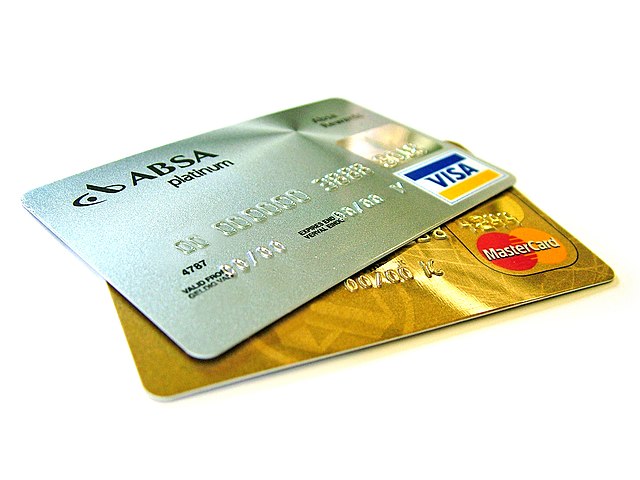Top Qs
Timeline
Chat
Perspective
Plastic card
Card made of PVC or other plastic conforming From Wikipedia, the free encyclopedia
Remove ads
Plastic cards usually serve as identity documents, thus providing authentication. In combination with other assets that complement the data stored on the card, like PIN numbers, they also serve authorization purposes, most often as debit or credit cards for allowing their holders to do financial transactions. Early and simpler cards feature only hard-to-imitate integrated photographs, security holograms, guillochés, or a magnetic strip on which few bytes of personal data could be stored. Today, smart cards, i.e. those equipped with an electronic chip (storage, or RFID), serve as high-security active electronic documents that allow their holder to qualify for driving cars (drivers license card), receive medical treatment (health insurance cards), do banking and more.

Remove ads
Industry
In their January 2020 report, the International Card Manufacturers Association's (ICMA) indicates a production increase to a record-high of 37.1 billion cards and $27 billion revenue in 2019.[1] Forecasts predicted market growth at a rate of 8.2% from 2021 to 2028, which was counteracted by losses through the COVID-19 pandemic.[2]
Production
Plastic cards (standard size ID-1) come in various colors and finishing.[3] The laminated mixture of various dyes, paper and plastics (so far mainly PVC and PVCA) and the integration with electronics makes them hard to recycle.[4][5]
Classification
Type
Range
- Contact cards (must be inserted into a suitable reading device, e.g. magnetic stripe cards)
- Contactless cards (using Near-field communication or RFID[6])
Techno
Apart from "regular", i.e. non-electronic cards, there is considerable overlap between "chip-enabled", "digital" and "smart" cards, mostly for historical reasons in the development of the current fully equipped smart cards.[7][8]
- Regular cards
- Chip-enabled cards
- Smart cards
- Digital card
- Magnetic stripe cards
Applications
- Gift cards
- Discount cards
- Access cards
- Payment cards
- Telephone cards
- Transportation cards
- Government/Health, e.g.
- SIM cards (smaller size contact card only used within mobile phones)
Non-electronic security features
Plastic cards may be printed with the following security-relevant features, some of them also containing personal information, others only serving as anti-forgery devices:[9][10]
- QR code and / or barcode
- photograph
- signature
- security hologram
- microprinting
- guilloché patterns (similar to bank notes)
See also
References
Wikiwand - on
Seamless Wikipedia browsing. On steroids.
Remove ads
